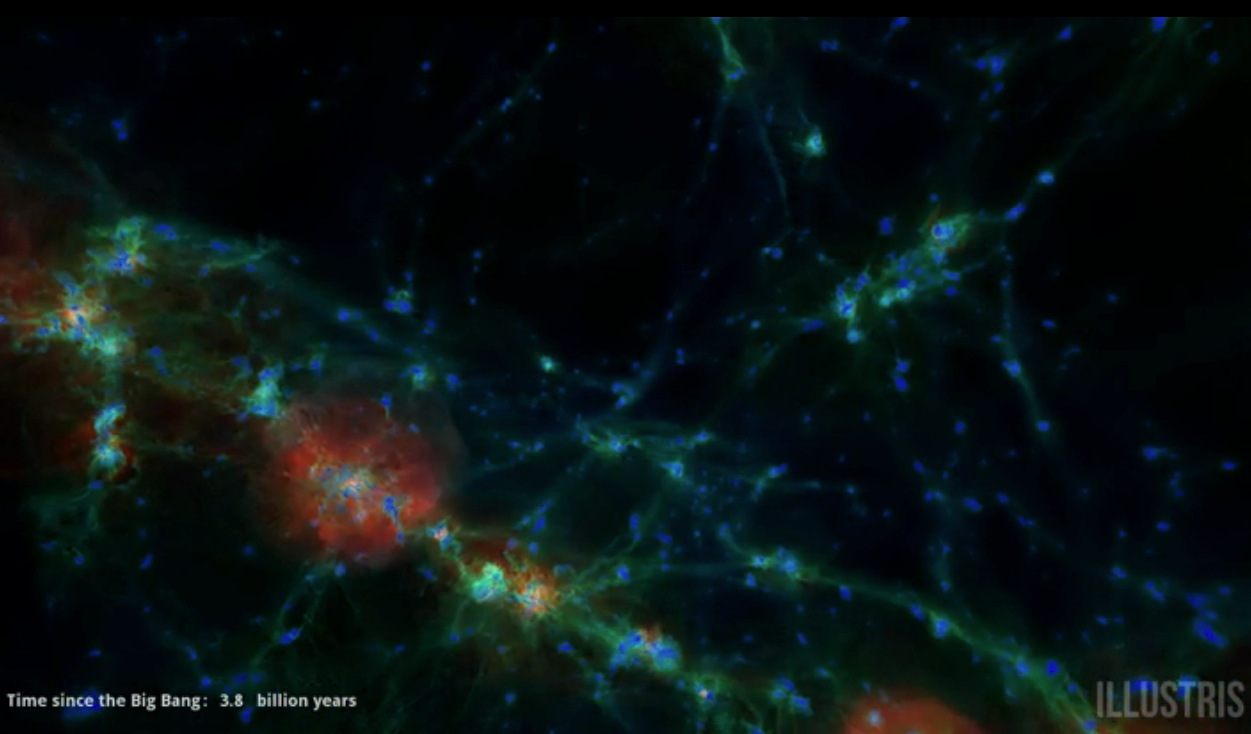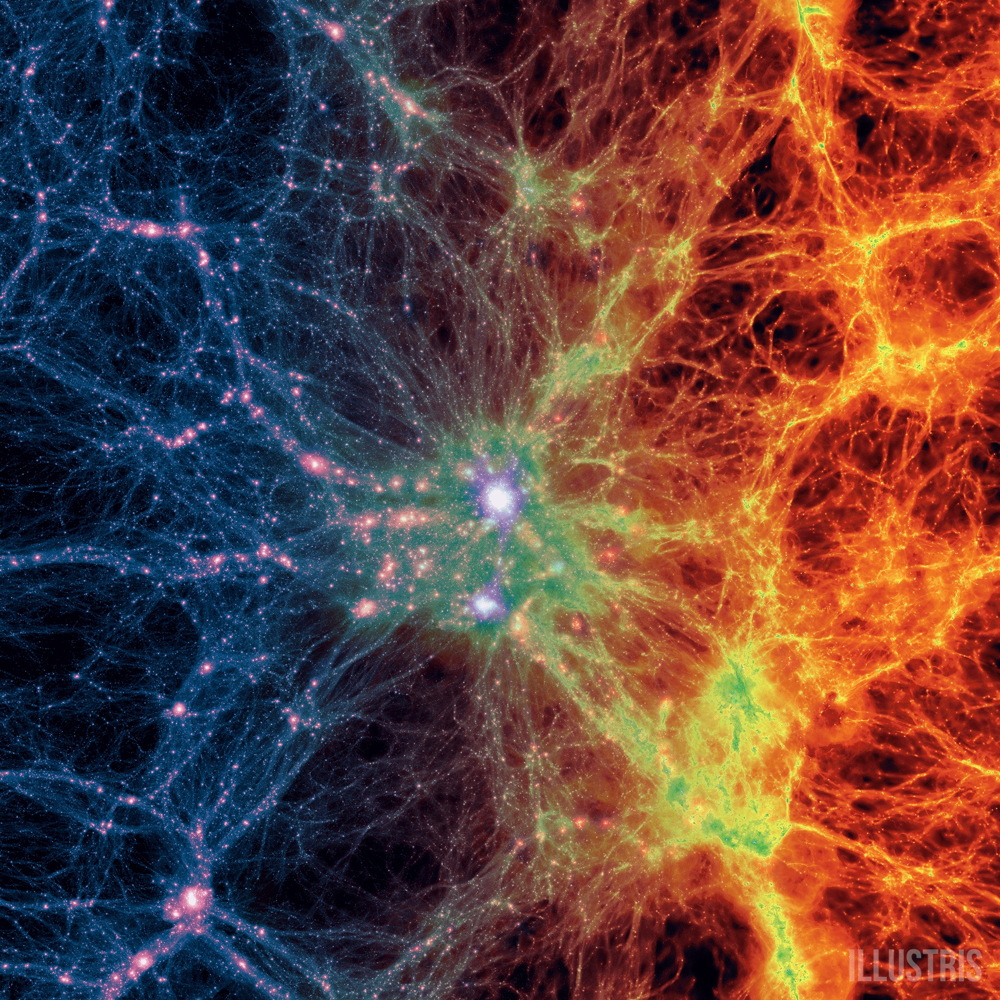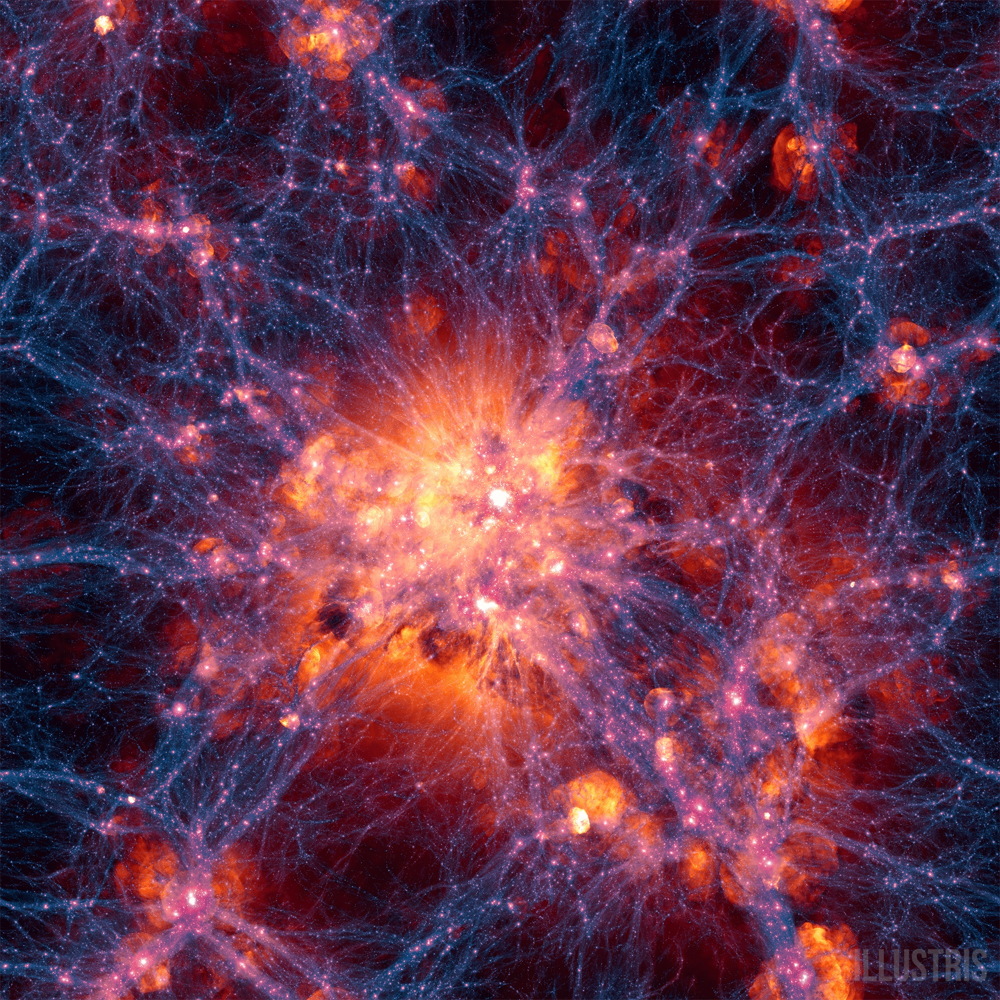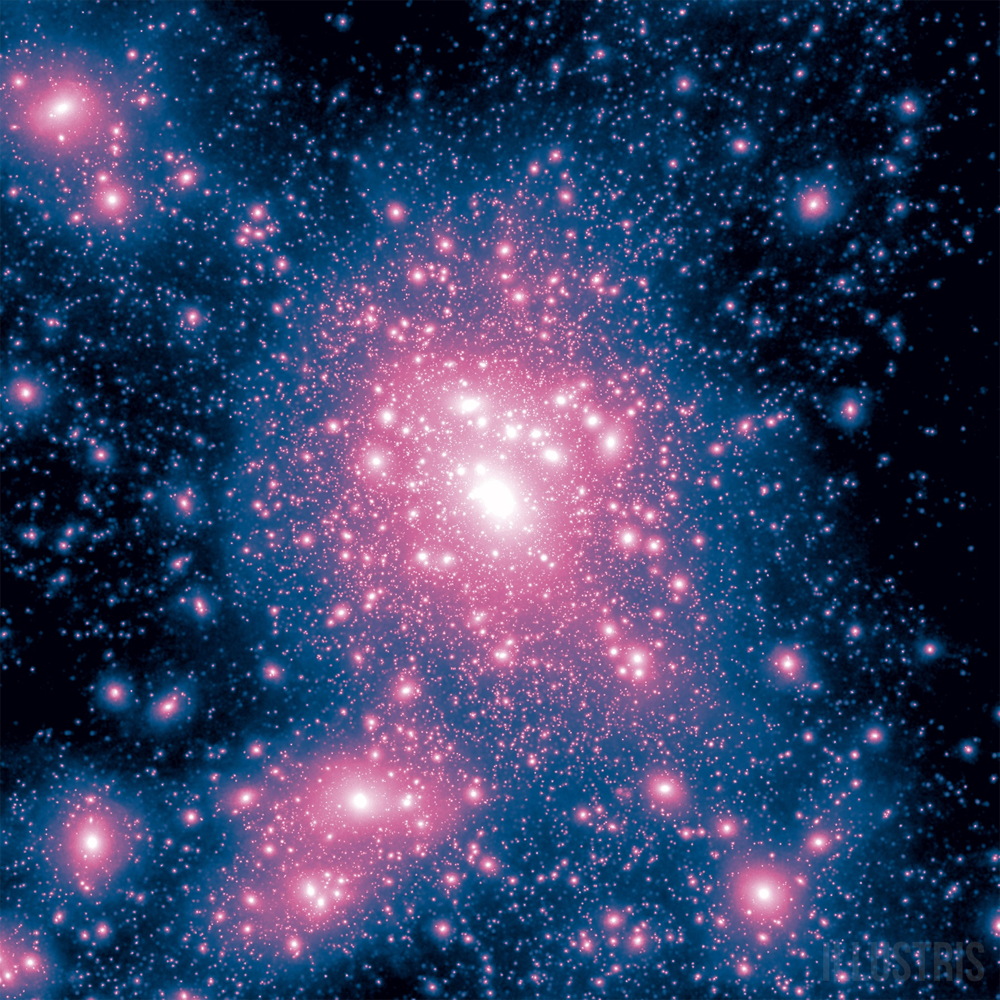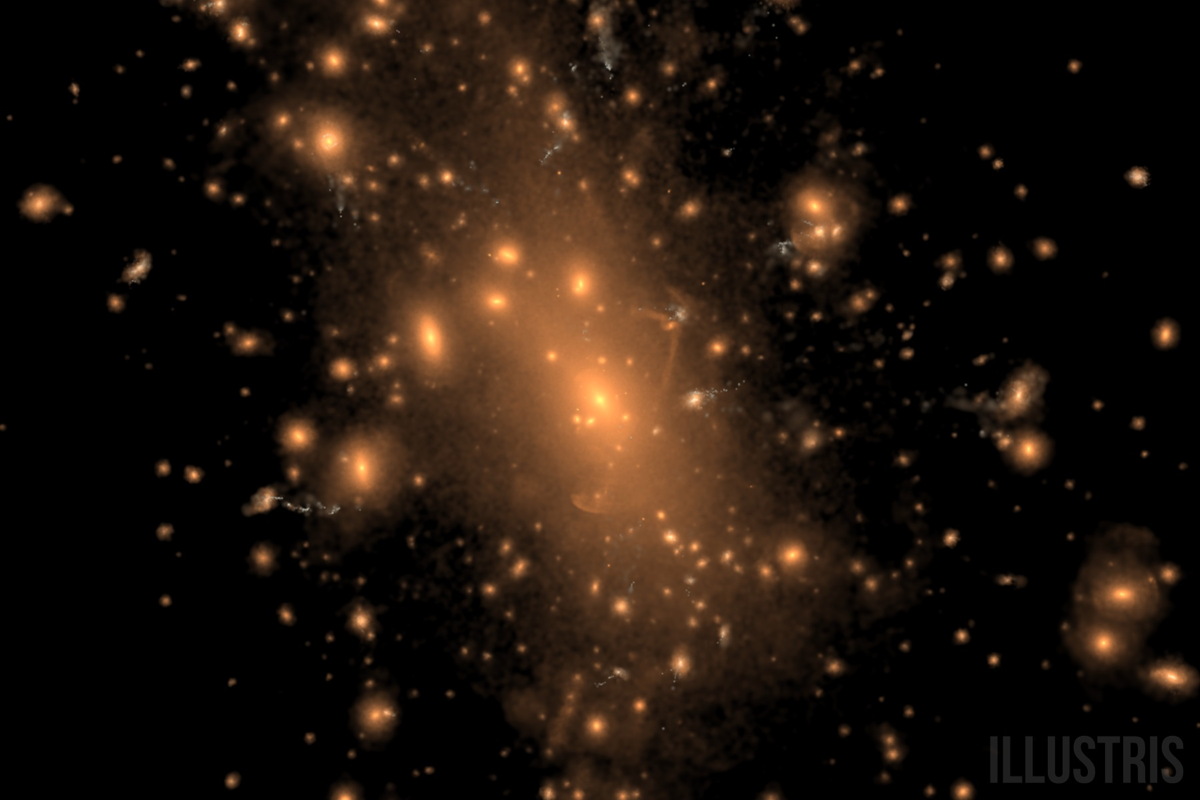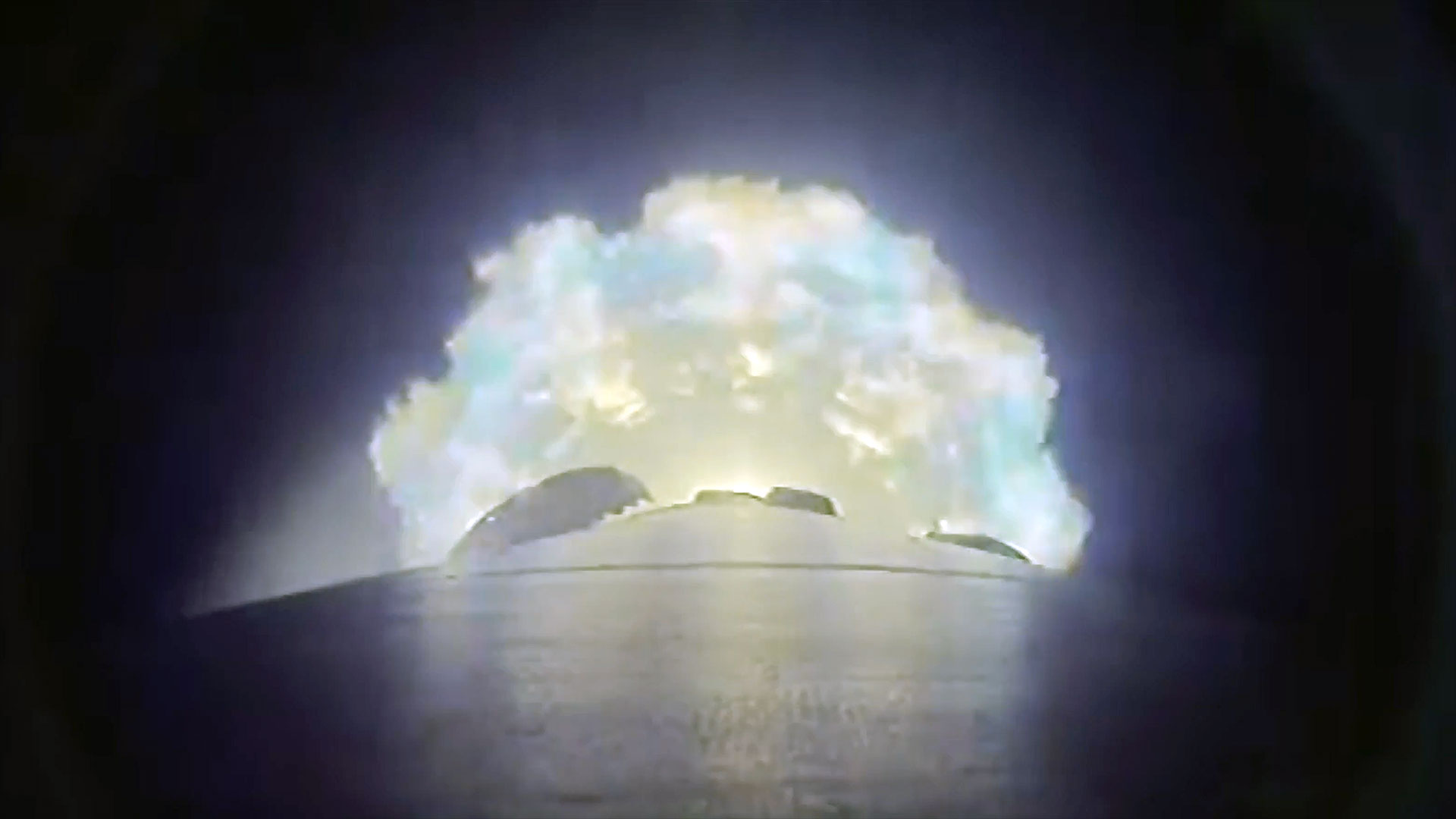Evolution of the Universe Revealed by Computer Simulation (Gallery)
A New Simulation of Cosmic Evolution
A new simulation showing the evolution of the universe traces the formation of the cosmic web of galaxies scientists see today. The simulation - called Illustris - covers about 13 billion years of the universe's evolution starting about 12 million years after the Big Bang. This new simulation of the evolution of the universe lets scientists see the dark matter density field, gas temperatures and gas metallicity in a cube that measures about 350 million light-years on each side. Image released May 7, 2014. [See full story.]
Explosions in the Cosmos
The new Illustris simulation of the evolution of the universe shows how galaxies could have distributed in the cosmos after the universe began more than 13 billion years ago. Image released May 7, 2014. [See full story.]
A Cosmic Web
This part of the simulation of the evolution of the universe shows a massive cluster. Dark matter density on the left is transitioning into gas density on the right side of the image. Image released May 7, 2014. [See full story.]
Dark Matter Density Overlaid with the Gas Velocity Field
This image from the Illustris simulation show dark matter density overlaid with the gas velocity field. Image released May 7, 2014. [See full story.]
Dark Matter Annihilation Map
The Illustris simulation includes a dark matter annihilation map of the most massive cluster. Image released May 7, 2014. [See full story.]
Stellar Light Distribution
This image of the Illustris simulation shows stellar light distribution of the most massive cluster within the scope of the simulation. Image released May 7, 2014. [See full story.]
Breaking space news, the latest updates on rocket launches, skywatching events and more!

Space.com is the premier source of space exploration, innovation and astronomy news, chronicling (and celebrating) humanity's ongoing expansion across the final frontier. Originally founded in 1999, Space.com is, and always has been, the passion of writers and editors who are space fans and also trained journalists. Our current news team consists of Editor-in-Chief Tariq Malik; Editor Hanneke Weitering, Senior Space Writer Mike Wall; Senior Writer Meghan Bartels; Senior Writer Chelsea Gohd, Senior Writer Tereza Pultarova and Staff Writer Alexander Cox, focusing on e-commerce. Senior Producer Steve Spaleta oversees our space videos, with Diana Whitcroft as our Social Media Editor.
